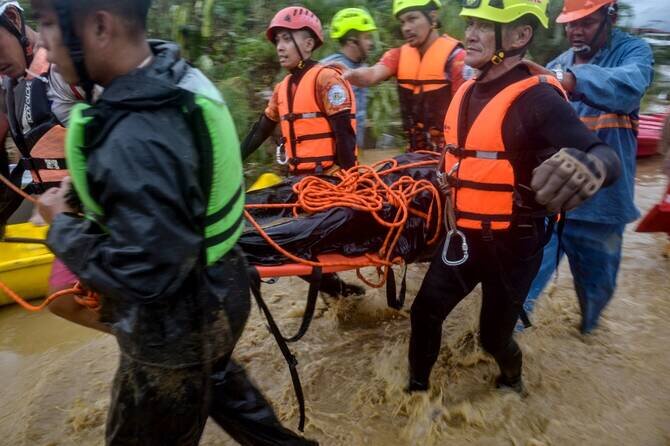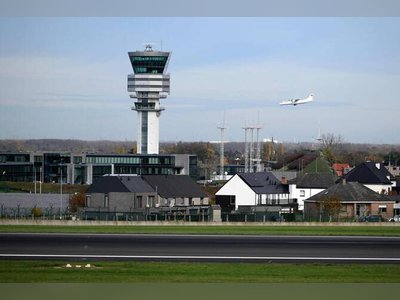
Philippines Declares State of Emergency Following Deadly Typhoon Kalmaegi
Typhoon Kalmaegi, the deadliest natural disaster in the Philippines this year, has left at least 114 people dead and hundreds missing.
Philippine President Ferdinand Marcos Jr. declared a state of emergency on Thursday following the devastation caused by Typhoon Kalmaegi.
The tropical cyclone, which affected nearly 2 million people, resulted in the deaths of at least 114 individuals, primarily due to drowning from flash floods.
Additionally, 127 people remain missing, many of whom are in Cebu province, which bore the brunt of the storm's impact.
The typhoon's powerful winds and heavy rains caused significant damage across central provinces, leading to the displacement of over 560,000 villagers.
Emergency shelters housed nearly 450,000 evacuated individuals, as per reports from the Office of Civil Defense.
The state of national calamity declaration by President Marcos aims to expedite emergency funding and prevent issues related to food hoarding and price manipulation.
As authorities continue to assess the damage left by Kalmaegi, concerns arise regarding another potential tropical cyclone that may strengthen into a super typhoon and impact the northern Philippines early next week.
The situation is further complicated by ongoing recovery efforts from previous disasters.
Cebu province, still reeling from a 6.9 magnitude earthquake in September, faced exacerbated issues due to substandard flood control projects and years of quarrying, which contributed to severe flash flooding.
Efforts to mitigate the effects of the typhoon included relocating thousands displaced by the earthquake to more secure shelters before Kalmaegi's arrival.
The prohibition on ferry and boat travel due to dangerous sea conditions left over 3,500 passengers stranded at ports, while nearly 200 domestic flights were canceled.
The Philippines' vulnerability to natural disasters is underscored by its exposure to approximately 20 typhoons and storms annually, in addition to earthquakes and active volcanoes.
These factors contribute to the country's status as one of the world's most disaster-prone regions.
The tropical cyclone, which affected nearly 2 million people, resulted in the deaths of at least 114 individuals, primarily due to drowning from flash floods.
Additionally, 127 people remain missing, many of whom are in Cebu province, which bore the brunt of the storm's impact.
The typhoon's powerful winds and heavy rains caused significant damage across central provinces, leading to the displacement of over 560,000 villagers.
Emergency shelters housed nearly 450,000 evacuated individuals, as per reports from the Office of Civil Defense.
The state of national calamity declaration by President Marcos aims to expedite emergency funding and prevent issues related to food hoarding and price manipulation.
As authorities continue to assess the damage left by Kalmaegi, concerns arise regarding another potential tropical cyclone that may strengthen into a super typhoon and impact the northern Philippines early next week.
The situation is further complicated by ongoing recovery efforts from previous disasters.
Cebu province, still reeling from a 6.9 magnitude earthquake in September, faced exacerbated issues due to substandard flood control projects and years of quarrying, which contributed to severe flash flooding.
Efforts to mitigate the effects of the typhoon included relocating thousands displaced by the earthquake to more secure shelters before Kalmaegi's arrival.
The prohibition on ferry and boat travel due to dangerous sea conditions left over 3,500 passengers stranded at ports, while nearly 200 domestic flights were canceled.
The Philippines' vulnerability to natural disasters is underscored by its exposure to approximately 20 typhoons and storms annually, in addition to earthquakes and active volcanoes.
These factors contribute to the country's status as one of the world's most disaster-prone regions.










